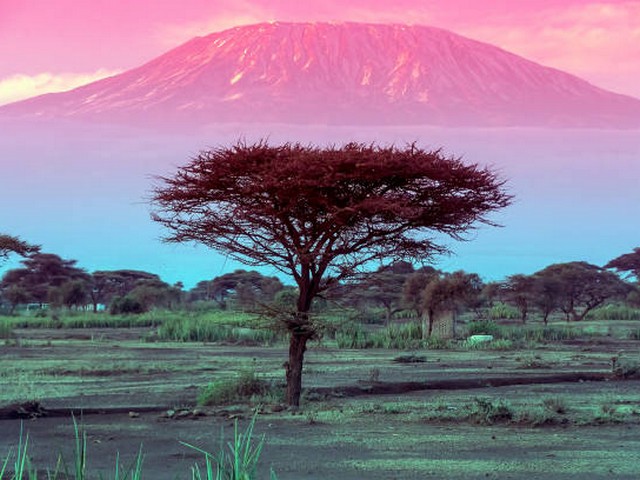Essential Equipment For Kilimanjaro Trekking: Your Ultimate Guide
Ascending the majestic slopes of Mount Kilimanjaro is more than just a trek; it is a journey of self-discovery and resilience. Those who undertake this adventure will find themselves walking the paths of legends, surrounded by some of the most awe-inspiring landscapes on Earth. At Kilimanjaro Centre For Trekking and Ecotourism (KCTE), we understand that the key to a successful summit lies not only in the spirit of the adventurer but also in their preparation. That’s why we’ve crafted this comprehensive guide to the essential equipment for Kilimanjaro trekking, ensuring you’re well-equipped for the journey ahead.
Why Proper Equipment is Crucial for Kilimanjaro
Trekking Kilimanjaro is unlike any other experience. The mountain’s unique equatorial location combined with its high altitude means you will traverse through five distinct climate zones – from tropical rainforest to arctic conditions. Each zone requires different gear to ensure comfort, safety, and success in reaching Uhuru Peak.
The Essential Kilimanjaro Trekking Gear List
Clothing: Layering Up for Every Climate
Base Layers: Begin with moisture-wicking base layers. These are crucial as they keep you dry and comfortable by pulling sweat away from your body.
Insulation Layers: As you climb higher and the temperature drops, your mid-layer will be your best friend. Fleece or down jackets offer excellent warmth while being lightweight.
Outer Layers: A waterproof and windproof jacket and pants are vital. They serve as your primary defense against the elements, be it rain, wind, or snow.
Head and Hand Gear: Never underestimate the chill of high altitudes. A good quality beanie or balaclava and thermal gloves are essential, especially towards the summit.
Footwear: Your Foundation
Hiking Boots: Durable, waterproof, and ankle-supporting hiking boots are non-negotiable. They should also be well broken-in to avoid blisters.
Socks: Invest in several pairs of moisture-wicking socks and a few pairs of warmer socks for the colder zones. Consider liner socks to further protect against blisters.
Backpacks and Bags
Daypack: A 30-40 liter backpack should suffice for your daily essentials. Make sure it has comfortable straps and a rain cover.
Duffel Bag: Most of your gear will be carried by porters in a duffel bag. Ensure it is durable and waterproof, typically 70-90 liters.
Sleeping Essentials
Sleeping Bag: Night temperatures can plummet below freezing. A sleeping bag rated for at least -10 degrees Celsius is recommended.
Sleeping Mat: An insulated sleeping mat not only provides comfort but also crucial warmth through insulation from the ground.
Health and Hygiene
Water Purification: Staying hydrated is crucial, but tap water isn’t safe to drink. Bring purification tablets or a water filter.
Sun Protection: The equatorial sun is fierce. Sunglasses, sunscreen, and a wide-brimmed hat are must-haves.
First Aid Kit: Include altitude sickness medication, plasters, antiseptic, painkillers, and any personal medications.
Nutrition and Energy
While KCTE provides meals, having your own supply of snacks can help keep your energy up throughout the climb. Energy bars, dried fruits, and nuts are light and nutritious options.
Tips for Packing: Balancing Weight and Necessity
When packing for Kilimanjaro, every ounce matters. Focus on multi-use items and remember that less is often more. However, do not skimp on essential gear. Ensure everything you pack serves a purpose.
Renting vs. Buying Equipment
While purchasing gear is a great investment for regular trekkers, renting can be a cost-effective option for those who do not plan frequent climbs. KCTE offers high-quality rental equipment suitable for the demands of Kilimanjaro.
Frequently Asked Questions
What is the most overlooked piece of equipment for Kilimanjaro?
Many forget a headlamp, which is essential, especially during your summit night push in the dark.
How should I choose the right footwear?
Opt for hiking boots with good ankle support and sturdy tread. Make sure they are well broken-in to minimize the risk of blisters.
Can I rent equipment directly at Kilimanjaro?
Yes, KCTE provides a range of rental options at the base of Kilimanjaro. It’s advisable to arrange your rentals in advance to ensure availability.
What should be in my daypack?
Your daypack should include water, snacks, extra clothing layers, sun protection, and your camera. Keep it light and functional.
Why Choose KCTE for Your Kilimanjaro Adventure?
Embarking on a journey to ascend Kilimanjaro is a monumental experience, and Kilimanjaro Centre For Trekking and Ecotourism is here to guide you every step of the way. Our expert guides, comprehensive trek support, and quality equipment rentals ensure you are fully prepared to meet the challenges and enjoy the wonders of Kilimanjaro.
Ready to Conquer the Roof of Africa?
Climbing Kilimanjaro is a life-changing experience, and having the right equipment is key to enjoying and conquering this majestic mountain. At KCTE, we’re committed to providing not just guidance, but an unforgettable adventure that starts with proper preparation. Book your Kilimanjaro climb with us today, and let us help you achieve your dream of reaching the summit. Visit our website or contact us to start your journey to the roof of Africa!
Remember, the mountain awaits, and the path to the summit begins with stepping forward equipped and ready. Let Kilimanjaro Centre For Trekking and Ecotourism be part of your incredible journey to the peak of Mount Kilimanjaro!




